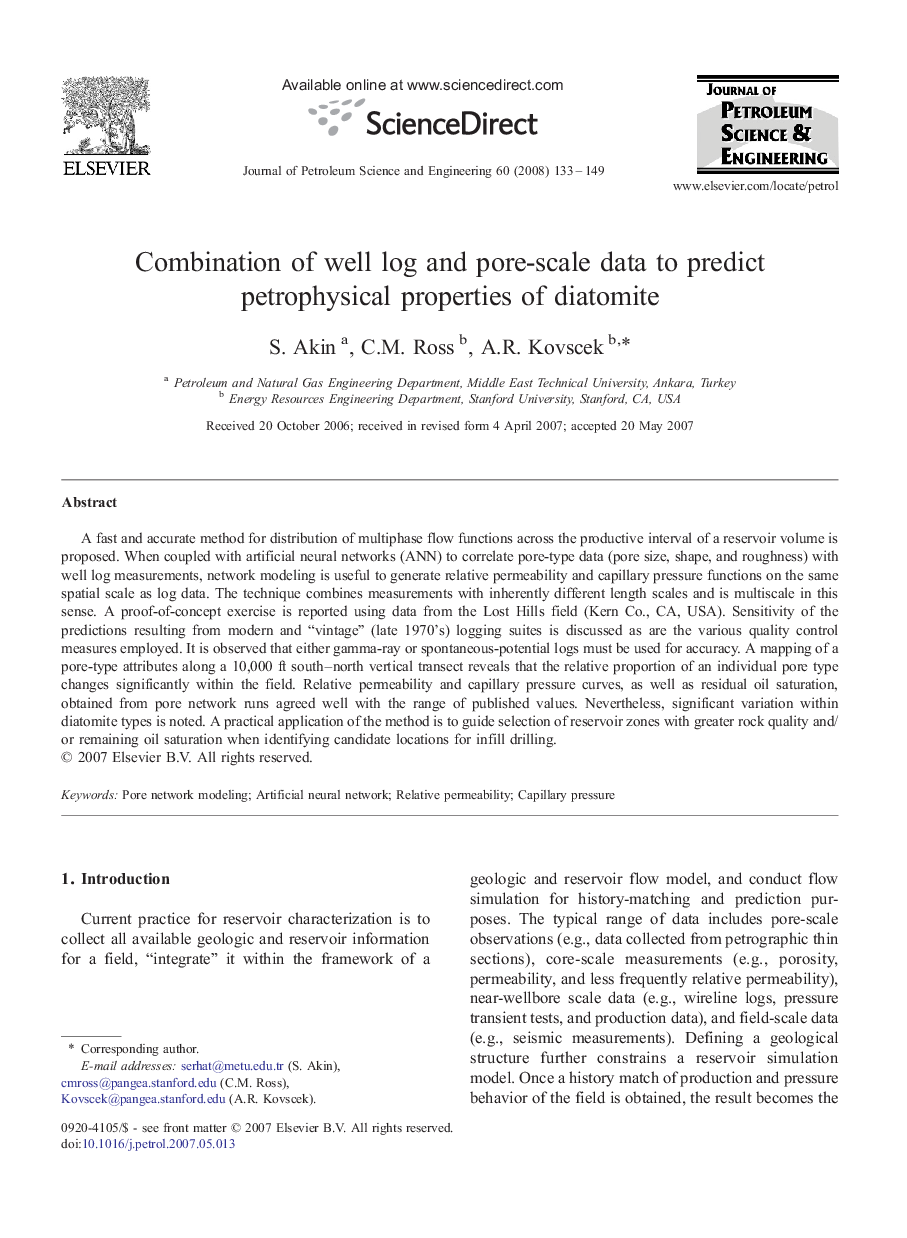| Article ID | Journal | Published Year | Pages | File Type |
|---|---|---|---|---|
| 1756138 | Journal of Petroleum Science and Engineering | 2008 | 17 Pages |
A fast and accurate method for distribution of multiphase flow functions across the productive interval of a reservoir volume is proposed. When coupled with artificial neural networks (ANN) to correlate pore-type data (pore size, shape, and roughness) with well log measurements, network modeling is useful to generate relative permeability and capillary pressure functions on the same spatial scale as log data. The technique combines measurements with inherently different length scales and is multiscale in this sense. A proof-of-concept exercise is reported using data from the Lost Hills field (Kern Co., CA, USA). Sensitivity of the predictions resulting from modern and “vintage” (late 1970's) logging suites is discussed as are the various quality control measures employed. It is observed that either gamma-ray or spontaneous-potential logs must be used for accuracy. A mapping of a pore-type attributes along a 10,000 ft south–north vertical transect reveals that the relative proportion of an individual pore type changes significantly within the field. Relative permeability and capillary pressure curves, as well as residual oil saturation, obtained from pore network runs agreed well with the range of published values. Nevertheless, significant variation within diatomite types is noted. A practical application of the method is to guide selection of reservoir zones with greater rock quality and/or remaining oil saturation when identifying candidate locations for infill drilling.
